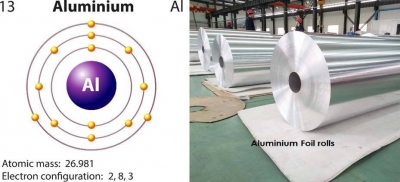
Aluminium is the most abundant element found in the crust of the Earth. It was first discovered by Hans Christian Oersted, a Danish physicist and chemist in 1825. And later, it was discovered by Friedrich Wohler, a German chemist in 1827. But Wöhler’s method could not produce aluminium in great quantities and the metal continued to be a rare metal. In fact, it was costlier than gold. As a result, aluminium was regarded highly at that time. There is a popular story that Napoleon, the famous French emperor, used aluminium knives and forks, while others at the table used silver tableware. It is also said that the King of Thailand once used an aluminium bracelet.
Aluminium is mostly used in the production of construction materials and kitchen utensils. In 1886, Paul Héroult, a French engineer, and Charles Martin Hall, an American engineer, independently electrolyzed a mixture of molten bauxite and cryolite to produce aluminium. This laid the foundation for large-scale production of the metal in later years. After this, two aspects of aluminium changed completely: firstly, it could be mass-produced and was no longer considered as a precious metal; secondly, the mass production of aluminium led to its widespread use in making of industrial and domestic products, which gradually replaced the use of other metals like steel and copper.
Picture Credit : Google




